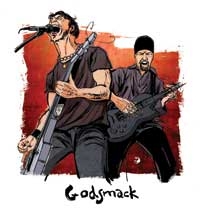The Future of Recorded Music - Part 2 Page 3
 While quality has often taken a back seat to convenience and portability (did anyone ever really argue that 8-tracks and cassettes were superior-sounding formats?), the real issue with digital files isn't so much quality as capacity. Files done with lossless encoding are readily available, but they usually take up three times as much room as MP3s. When terabyte-sized hard drives are common, fans won't be forced to choose between higher-quality files or thousands of songs: They'll be able to have both.
While quality has often taken a back seat to convenience and portability (did anyone ever really argue that 8-tracks and cassettes were superior-sounding formats?), the real issue with digital files isn't so much quality as capacity. Files done with lossless encoding are readily available, but they usually take up three times as much room as MP3s. When terabyte-sized hard drives are common, fans won't be forced to choose between higher-quality files or thousands of songs: They'll be able to have both.
Digital files are even winning some surprising converts. Neil Young, for example, hated the sound of early CDs so much that he waited decades to release his older recordings on the format. But he just used the Windows Lossless format to release his new album, Living with War (see review), on the Music- Giants Web site weeks before the CD hit stores.
Track 3: The Singles Scene
Letting fans buy music by the track has several consequences for artists. The most obvious is that it shifts the music business from selling albums to selling singles, changing the average cost of goods from $14 to 99¢. But some artists create a group of songs meant to be heard as an album.
Many artists and producers devote a lot of effort to "sequencing" the album (putting the tracks in a certain order). "Maybe this an area where I'm the old grandpa in the corner saying, 'Back in my day,' but I have a feeling many 15-year-olds don't listen to full albums," Guster's Miller says. "We fought for three weeks about the sequence of our record, because it really does change how you understand a body of work. All the great albums have a beginning, a middle, and an end - they're not just a collection of songs."
Ultimately, though, people will listen to music however they want, and digital tracks make that easier. "It's not for me to tell fans how to listen," Miller admits. "But I give a lot of deference to bands when they put out an album, because there's something really vital about sitting down with an artist for 45 minutes and listening to them tell a story."
- Log in or register to post comments



































































